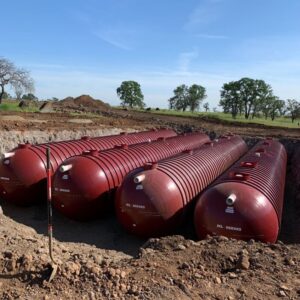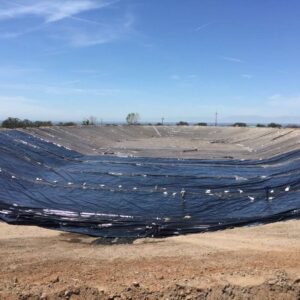How Does a Septic Tank Work
How does a septic tank work? What are they? What are the benefits of using one? In this article, we will answer all of those questions and more. We'll start by explaining what a septic tank is and how it works. Then we'll discuss the benefits of using a septic tank and show you why they are such an important part of any home wastewater system.
In every home, all household plumbing has to go somewhere. All the waste we produce must be filtered before going back into the water cycle. Urban areas often use a city sewer system. The waste from every home and business in an area goes into one collective sewer main. This wastewater then travels to a treatment plant for filtering.
Rural areas don’t have this convenience due to the larger distance between homes. A sewer system would be too expensive to install, so private septic systems are installed to filter the wastewater; Read this guide to find out how a septic system works.
These private septic systems consist of a septic tank and a drainage field also known as a leach field. When considering the installation of septic tanks how they work is often the first question our experts hear. So how do septic tanks work? Read on to learn more about their key role in wastewater management.
The Role of a Septic Tank
A conventional septic system consists of two main components—the septic tank and the leach field. In this article, we’re going to focus on the heart of the system: the septic tank. If you’re interested in how a septic system works together as a whole, you can find more information at our newest page.
The role of the septic tank is to treat the wastewater before it enters the leach field. The septic tank is a watertight chamber that is typically made of concrete, fiberglass, or polyethylene. It’s important to note that a septic tank will function effectively without a leach field. However, if you want your septic system to last for many years, we recommend installing a leach field in addition to the septic tank.
How Septic Tanks Work

Wastewater enters the tank through one end and leaves on the other. There are three layers in a septic tank system. The bottom layer is called the sludge layer where solid wastes collects. Bacteria in the tank breaks down the solid waste material that sinks to the bottom. The top is called the scum layer, and this consists of lightweight waste such as grease or fat. The middle layer is the wastewater also called the effluent. The wastewater in this layer still needs further filtering before it’s ready to enter the groundwater. When new wastewater enters the septic tank, the overflow of effluent enters the drainage pipe to travel to the drainage field. There are only a few system designs where a septic tank will function effectively without a leach field.
The Leach Field

How does leach field work affect your property? It’s easy to locate the drainage field on your property. Just look for the greenest area. The grass around the drainage field takes advantage of the water released from the pipes. It’s important to know where this area is so that you can watch out for any signs of septic system failure.
Septic Tank Maintenance
While a septic tank can filter sewage unattended, there are still things the homeowner needs to do to keep the septic tank process running smoothly. How does septic tank work like maintenance and repairs affect your system? You shouldn’t experience much downtime for routine maintenance, but repairs (as a result of damage or lack of maintenance) could cause larger problems.
Problems with the septic tank can lead to sewage backing up into the house or overflowing into your lawn. Clogs, cracks or backups are problems that will only get worse the longer you ignore them. Properly maintaining septic tanks can allow them to last for many years without needing to have any major installation done. There are many ways to keep your septic system functioning.
Things To Avoid To Keep Your Septic Tank Functioning
You may be wondering, how does the septic tank work to remove inorganic waste? The short answer is that it doesn’t. An important thing to remember is that all the waste that leaves your home through the plumbing will end up in your septic tank. This means anything flushed down the toilet or garbage disposal ends up there. Don’t flush anything into the septic tank that shouldn’t be there. This can include diapers, feminine products, kitty litter or chemicals. Also, be careful of products that claim they are “disposable”. Not all products are safe to enter the septic tank. Even some toilet paper products aren’t designed to break down in the septic tank which can cause clogs or build up.
The drainage field needs to be properly maintained as well. Without maintenance, wear and tear can affect how a septic field works. How does septic field work become affected by wear and tear? Driving over the leach field can cause damage to the pipes. The soil and gravel surrounding the pipes can compress under the weight of a vehicle.
Avoid roots damaging the septic system by keeping trees with long roots far away from the area. Roots can get into the drain field, pipes and septic tank. This can cause clogs or even cracks that will disrupt the system.
Signs Of Septic Tank Work on the Horizon
There are many signs that your septic work is showing signs of wear or damage. One could be slow draining in sinks or bathtubs. Toilets can also have trouble flushing. These are both signs that the septic tank is not dispelling the wastewater in the tank quickly enough to take in the new wastewater. You might even notice a foul odor coming from drains in your home which can lead to sewage backing up into the house.
If you notice your lawn getting lusher and greener around the leach field, this might not actually be a good thing! This can show signs of problems with the outlet pipes. There could be a blockage or even a break that is spilling excess water into the soil.
Noticing any of these problems is the first sign that you need to call your local septic tank expert to repair any damage to your system.
Finding A Septic Tank Expert

Not only can you call a septic expert for problems with your septic tank, you can also install a new system. This might sound like a daunting task, but upgrading your septic tank is a great investment into your home. How does a septic work order increase your home’s value? There are alternative septic tanks that will speed up the filtering process that will allow for a smaller septic tank. For more information about how septic tanks work, check our FAQ below!
Septic Tank Function FAQ
When you're buying a septic tank how does it work is likely to be at the forefront of your mind. A septic tank is a water-tight chamber made of concrete, fiberglass, or plastic, with an inlet and outlet piped to it. Wastewater flows from your home to the septic tank where it is held for some time before being discharged into a leach field for further treatment.
If you wonder how do septics work with wells, the answer is "fantastically." A septic tank system can be paired with a well on your property to maximize efficiency and minimize environmental impact.
Wondering how does a septic field work to prevent contamination? Once you know how to septic tanks work wonders for irrigation and nutrient delivery with minimized risk for environmental hazards. The effluent flows through a series of pipes into a drain field where it is purified by soil bacteria before wastewater ever reaches the groundwater. Septic systems are an important part of any home or business and understanding how they work is critical to their proper maintenance.
When functioning properly, septic tanks treat wastewater to remove contaminants and contain waste. You might be wondering how does septic tanks working properly look? Essentially, you shouldn't notice anything extraordinary if your tank is working right.
Once you know what goes into a septic tank how it works can be easier to understand. Each tank is composed of three main parts: the inlet, outlet, and baffle.
The inlet is the pipe that brings wastewater into the septic tank. The effluent then flows through the baffle, which is a T-shaped structure that prevents solids from leaving the tank while allowing liquids to pass through. From there, the liquid waste enters what's called the anaerobic chamber where digestion occurs. In this chamber, bacteria break down solid matter. Finally, the treated effluent exits through the outlet and returns to groundwater.
It's fascinating how septic tank system works as a whole that is greater than the sum of its parts. A pipe transports wastewater from your house into the septic tank. The solid waste in the water sinks to the bottom, forming sludge, while oil and grease float to the top, forming scum. Bacteria decomposes waste in the tank. The effluent is pumped out of the septic tank and dispersed through a drain field where it is further treated by bacteria as it percolates through soil. This method purifies wastewater before it reenters groundwater aquifers or surface waters by removing hazardous germs, viruses, fungi, and other pollutants.
A septic tank is a large container, usually made of concrete, plastic, or fiberglass, which holds and treats wastewater before dispersing it to a drain field. They are an environmentally friendly wastewater treatment option, and they can be used in place of or in conjunction with a sewer system.
When comparing how a septic works versus how sewer systems work, you have to consider how septic tank works with the environment of your property, where sewer is dependent on proximity to your neighbors and the city center.
Save 10% on All Septic Products
For All New Customers
"*" indicates required fields
